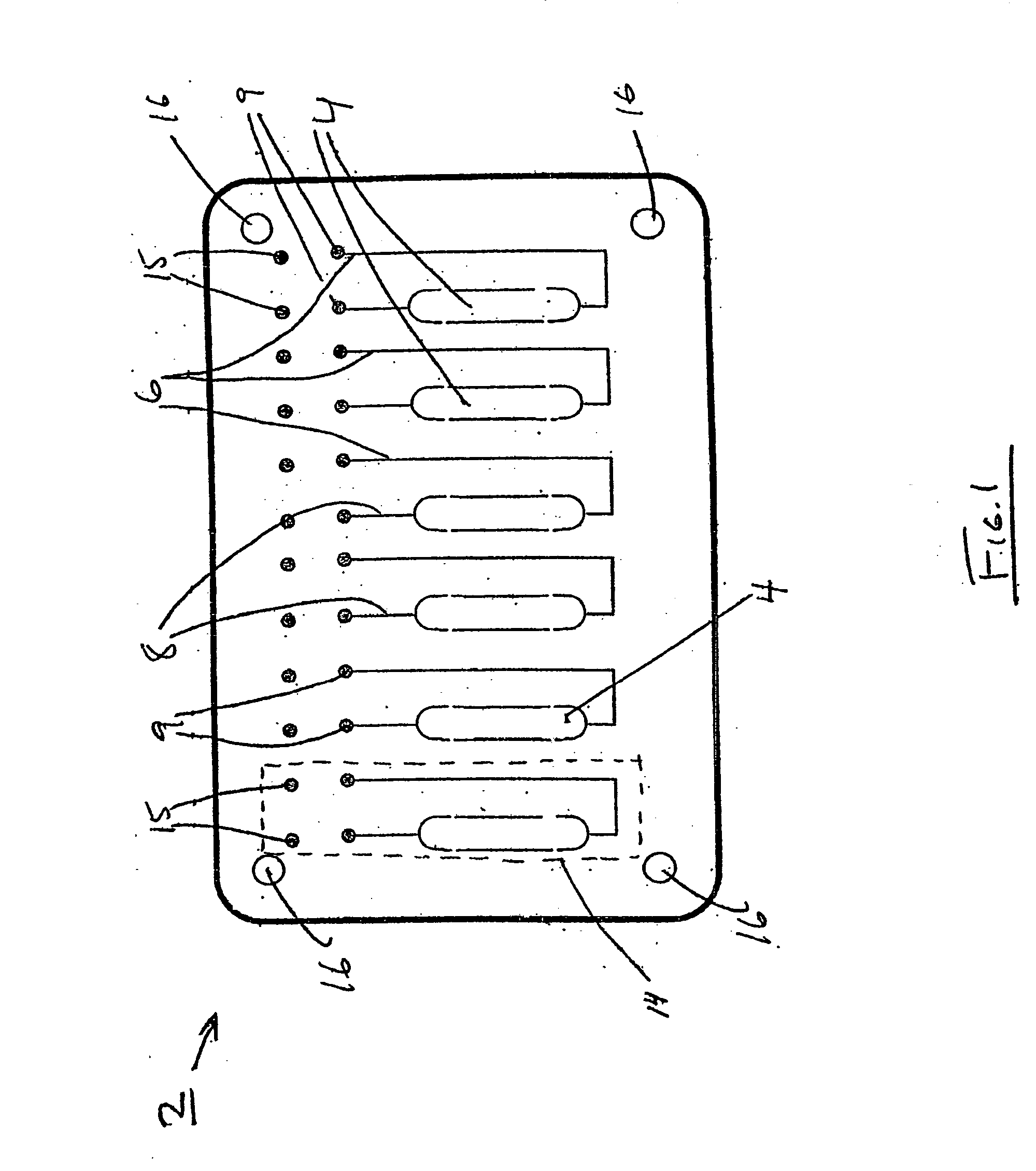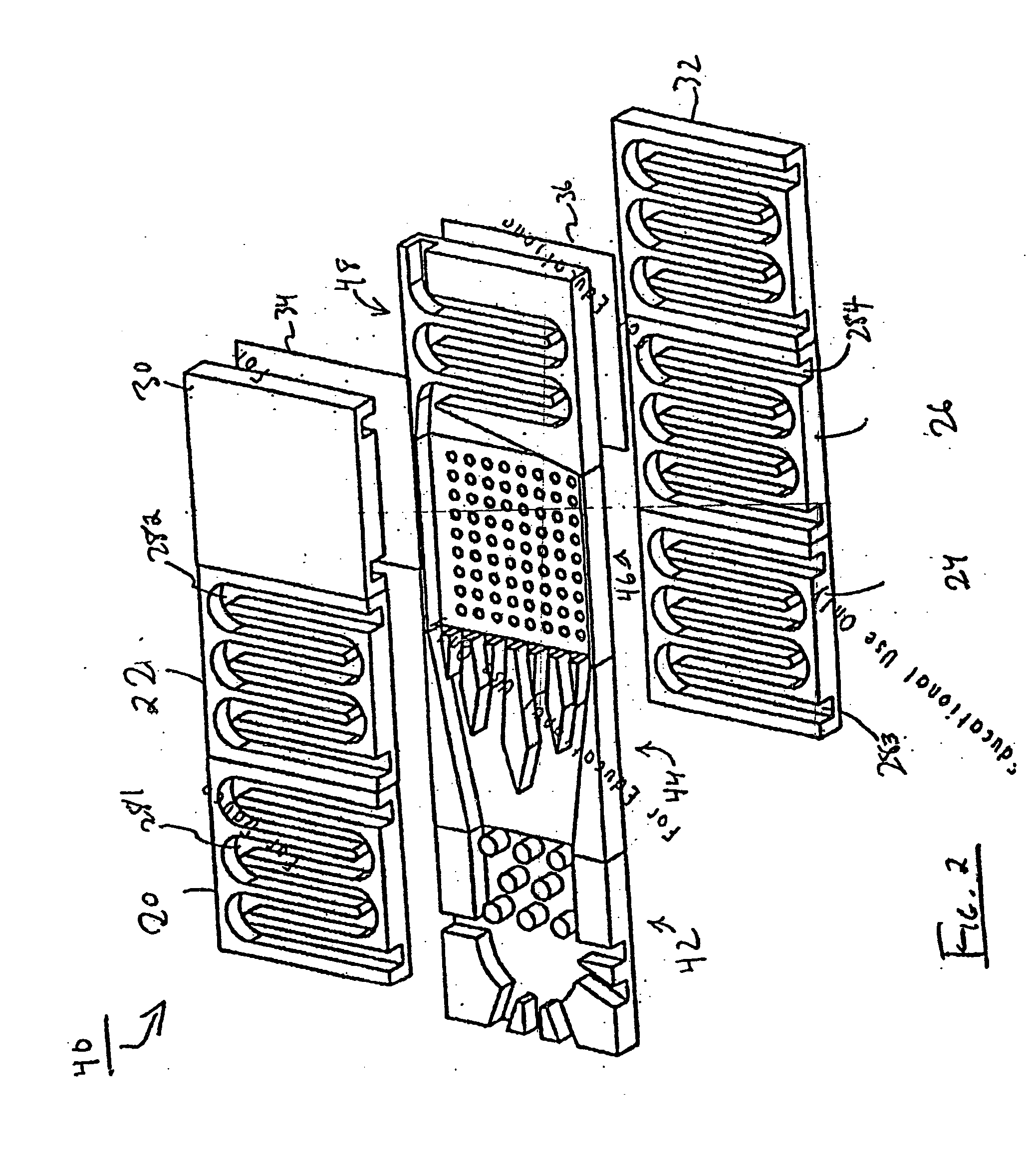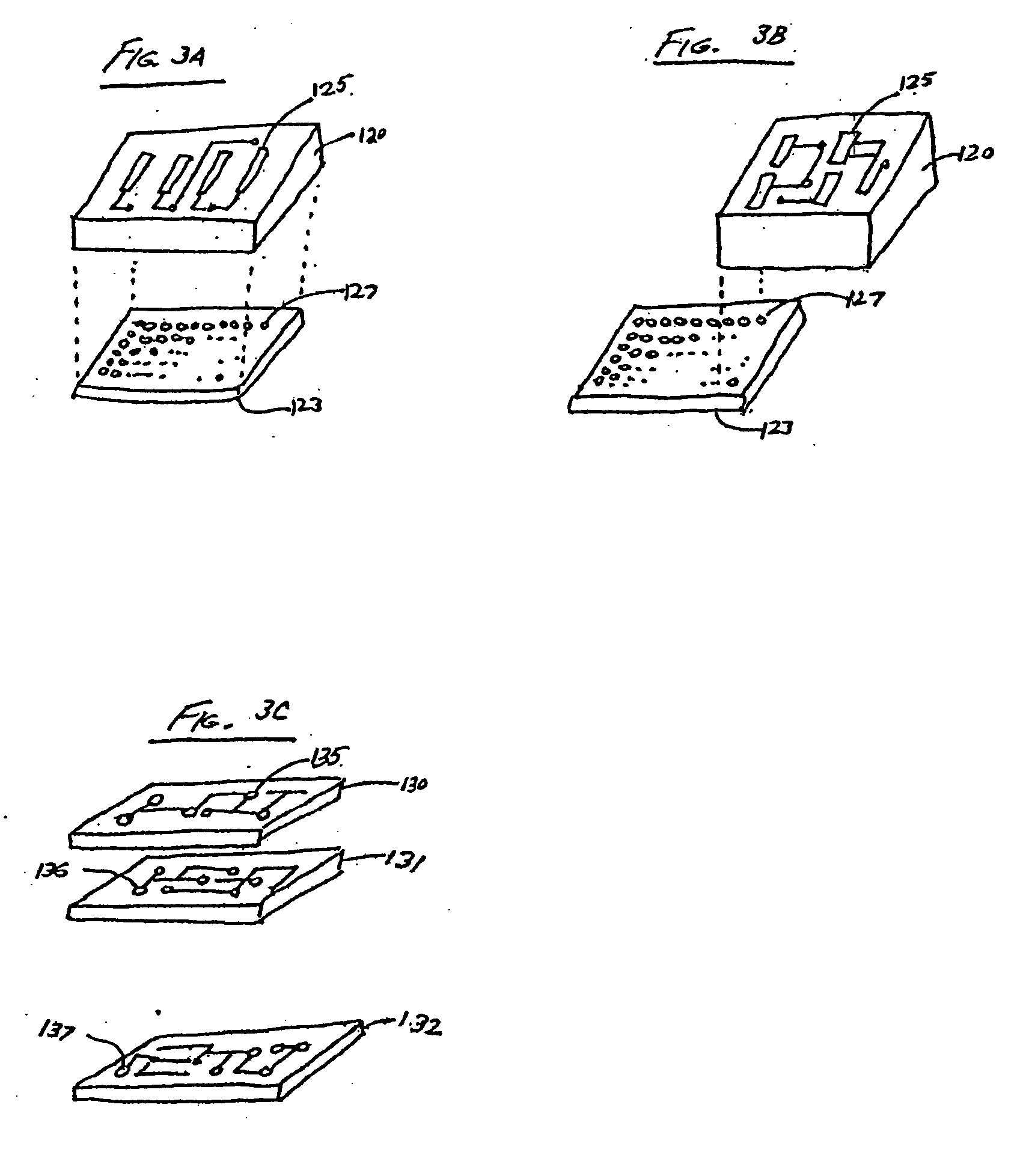Control of reactor environmental conditions
- Summary
- Abstract
- Description
- Claims
- Application Information
AI Technical Summary
Benefits of technology
Problems solved by technology
Method used
Image
Examples
example 1
[0189] In this example, an exemplary chip, as illustrated generally in FIG. 4A, is prepared. A first chip layer having associated fluidic channels, ports, compartments, other reaction sites, etc. therein is injection molded or machined from a stock sheet of acrylic or polycarbonate. This first layer is attached to a machined or injection molded flat bottom plate (also acrylic or polycarbonate) by means of a pressure-sensitive silicone adhesive (Dielectric Polymers). A humidity control membrane comprising one or more of the materials described above for forming humidity control layers / membranes is also attached to the top side of the first layer by means of the pressure-sensitive silicone adhesive.
[0190] A second chip layer (including a top) having associated fluidic channels, ports, compartments, other reaction sites, etc. therein is cast in a mold using PDMS. This second layer is fashioned to be alignable with the first chip layer. The second layer is aligned with the compartments...
example 2
[0191] This example illustrates various chips formed from multiple layers of dissimilar materials. A variety of adhesives can be used to fix the interface layers to the rigid cell culture or sealing layers depending on the materials involved. One adhesive that can be used for bonding PDMS to polycarbonate is a two-part urethane epoxy mixed with un-cured PDMS. The adhesive process used to bond rigid polycarbonate layers to each other can be either sonic welding or a heated press. The reaction site is designed, in this example, to be about 200 microns thick and had a volume of roughly 20 microliters.
[0192] A chip 280 having reaction site 240 is fabricated. As shown in FIG. 8A, a polycarbonate layer 244 is attached to a humidity control material of the invention 242. A gap within the material 242 defines reaction site 240 when the chip was assembled, as shown in FIG. 8A. Material 242 is attached to polycarbonate layer 244.
[0193] A similar chip is illustrated in FIG. 8B. In this figur...
example 3
[0194] This example illustrates various chips formed from multiple layers of dissimilar materials. A variety of adhesives can be used to fix the interface layers to the rigid cell culture or sealing layers depending on the materials involved. One example adhesive used for bonding PDMS to polycarbonate is a two-part urethane epoxy mixed with un-cured PDMS. The adhesive process used to bond rigid polycarbonate layers to each other can be, for example, sonic welding or a heated press. The reaction site is designed, in this example, to be about 200 microns thick and had a volume of roughly 20 microliters.
[0195] The fabrication of the chips illustrated in FIGS. 9A and 9B is similar to those described in Example 2, including the adhesion methods. In FIG. 9A, the reservoir layer 248 is fashioned from polycarbonate and was positioned between a humidity control material of the invention 246 and polycarbonate layer 244. Reservoir layer 248 has a gap (i.e., a hole or a partially hollowed out ...
PUM
 Login to View More
Login to View More Abstract
Description
Claims
Application Information
 Login to View More
Login to View More - R&D
- Intellectual Property
- Life Sciences
- Materials
- Tech Scout
- Unparalleled Data Quality
- Higher Quality Content
- 60% Fewer Hallucinations
Browse by: Latest US Patents, China's latest patents, Technical Efficacy Thesaurus, Application Domain, Technology Topic, Popular Technical Reports.
© 2025 PatSnap. All rights reserved.Legal|Privacy policy|Modern Slavery Act Transparency Statement|Sitemap|About US| Contact US: help@patsnap.com



